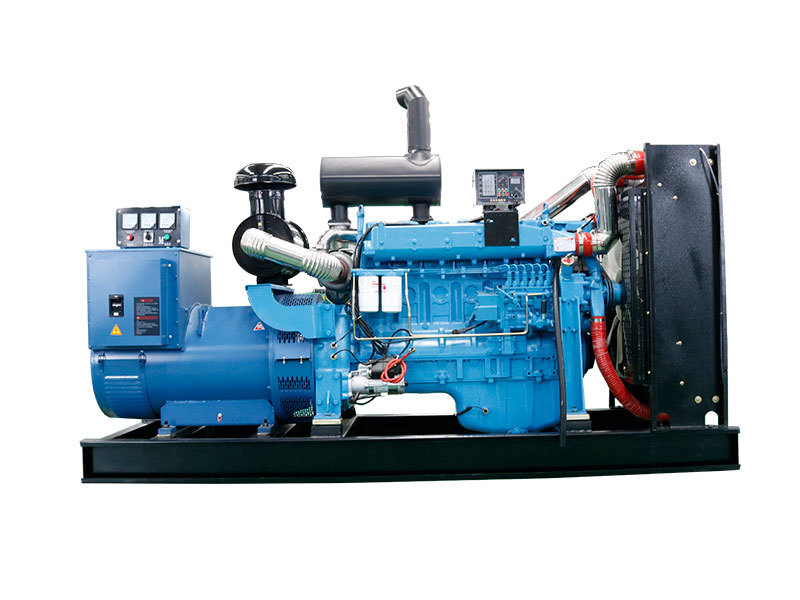
A generator set can be a lifesaver during power outages, providing essential electricity for homes and businesses. However, knowing how to use a generator set correctly is crucial for both safety and efficiency. This comprehensive guide will walk you through the process, from preparation and startup to ongoing maintenance and troubleshooting.
Preparing Your Generator Set
Before starting your generator set, take some time for essential preparation. First, consult your owner's manual for model-specific instructions. This document is your go-to resource for safe operation. Choose a well-ventilated outdoor location for your generator, far from windows and doors to prevent carbon monoxide poisoning. Never operate a generator indoors or in enclosed spaces. Next, check the oil and fuel levels, ensuring they are within the recommended range. Finally, connect your appliances to the generator using heavy-duty extension cords rated for outdoor use. Remember, overloading the generator can damage it and create safety hazards. So, calculate the total wattage of the appliances you plan to connect and ensure it's within the generator's capacity.
Starting Your Generator Set
Once you’ve completed the preparations, you're ready to start the generator. Make sure the fuel valve is open and the generator's circuit breaker is in the off position. Then, turn the engine switch to the "on" position. Next, locate the choke control (if your generator has one) and set it to the "start" position. This enriches the fuel mixture for easier starting in cold conditions. Now, pull the recoil starter cord firmly or turn the electric start key, depending on your generator model. Once the engine starts, allow it to warm up for a few minutes before connecting any loads. Gradually adjust the choke to the "run" position as the engine warms up.
Connecting Appliances to Your Generator
With the generator running smoothly, you can now connect your appliances. Prioritize essential appliances like refrigerators, freezers, and lights. Be mindful of the generator's wattage capacity and avoid overloading it. It’s a good idea to connect appliances one at a time, monitoring the generator's load meter to avoid exceeding its limits. How do you prioritize which appliances to connect during an extended outage? Think about what you need most for safety and comfort.
Safe Operating Procedures
Safety should always be your top priority when using a generator set. Never refuel a hot or running generator. Allow it to cool down completely before adding fuel to prevent fire hazards. Keep children and pets away from the operating generator. Regularly inspect the generator for any signs of damage or leaks. Also, install carbon monoxide detectors in your home to provide an early warning against this odorless, colorless gas.
Maintaining Your Generator Set
Regular maintenance is essential for keeping your generator set in optimal working order. Refer to your owner's manual for the recommended maintenance schedule for your specific model. This typically includes regular oil changes, air filter cleaning or replacement, and spark plug checks. Proper maintenance extends the lifespan of your generator and ensures reliable performance when you need it most. Investing time in regular maintenance now can prevent costly repairs down the road.
Troubleshooting Common Generator Problems
Even with proper maintenance, you might encounter occasional issues with your generator set. If your generator fails to start, check the fuel level, spark plug, and air filter. If the engine runs but doesn't produce power, check the circuit breaker and ensure the appliances are connected correctly. For more complex issues, consult a qualified technician.
Storing Your Generator Set
When not in use, store your generator set in a dry, well-ventilated area. Drain the fuel or add a fuel stabilizer to prevent deterioration. Cover the generator to protect it from dust and debris. Proper storage ensures your generator is ready to go when you need it next.
Choosing the Right Generator Set for Your Needs
Selecting the right generator set involves considering several factors, including power requirements, fuel type, and portability. Portable generators are ideal for backup power during outages, while larger standby generators offer a more permanent solution. Determining the wattage you need is a crucial first step. Consider both starting wattage and running wattage requirements for your appliances. For portable generator options, consider how easy it is to transport and store.
Understanding Generator Power Output
Generator sets are rated in watts, which measure the amount of power they can produce. Understanding the difference between starting watts and running watts is crucial. Starting watts refers to the surge of power needed to start appliances with electric motors, while running watts is the power required to keep them operating. Choosing a generator with sufficient wattage for your needs is essential for preventing damage to both your appliances and the generator itself.
Taking the Next Steps with Your Generator
Owning a generator set provides peace of mind knowing you have backup power available. By following these guidelines and regularly consulting your owner’s manual, you can confidently and safely operate your generator, keeping essential appliances running when you need them most. Do you have any other questions about using a generator set? Feel free to reach out to a qualified electrician or generator specialist for expert advice tailored to your specific needs. Preparing for power outages is an investment in safety and security.






